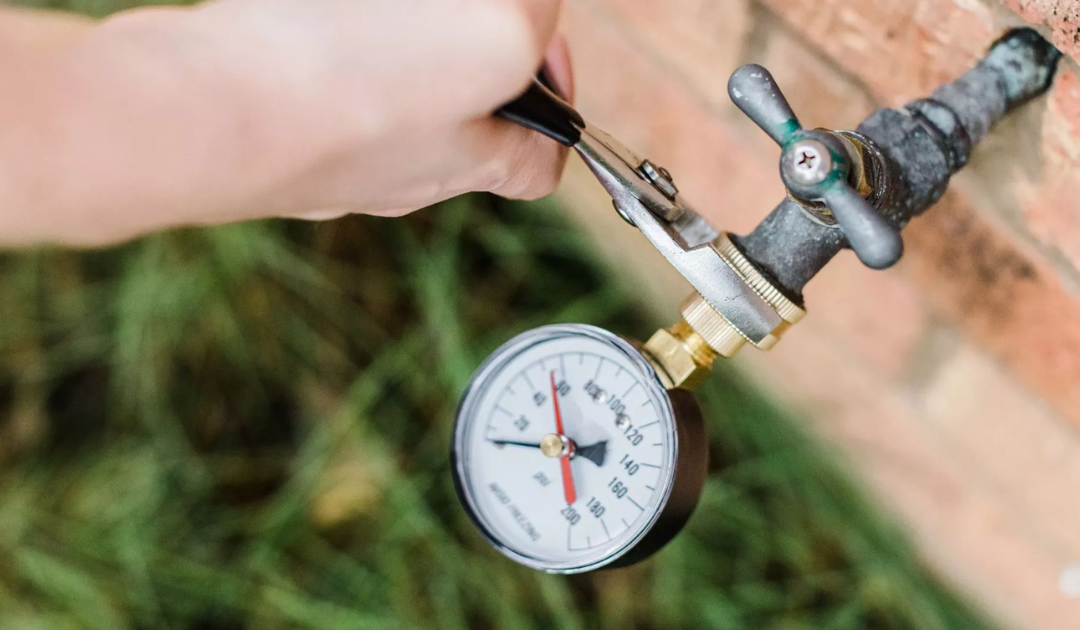This article in the next paragraphs involving 9 Reasons for Low Water Pressure in Your House is exceptionally intriguing. Give it a try and draw your own personal findings.

Low water stress in your house can be an irritating trouble, impacting every little thing from bathing to cleaning meals. If you're experiencing weak water flow, there are several feasible causes and options to check out. In this overview, we'll review usual reasons for low water stress and functional actions to resolve the problem successfully.
Introduction to Low Tide Stress
Low tide pressure happens when the circulation of water from your taps, showers, and other components is weaker than typical. This can make daily jobs extra tough and less reliable. Recognizing the sources of low water pressure is vital to finding the best solution.
Common Reasons For Low Tide Pressure
Faulty Pressure Regulators
Pressure regulators are accountable for preserving consistent water pressure in your home. If they malfunction, it can cause low tide pressure or uneven circulation throughout your house.
Metropolitan Water Supply Issues
Sometimes, the trouble lies outside your home. Community water supply concerns, such as main line leaks or maintenance job, can temporarily minimize water stress in your area.
Pipe Obstructions
With time, pipelines can become blocked with natural resource, debris, or particles, limiting the circulation of water. This is a typical problem in older homes with galvanized steel pipes.
Rust
Deterioration within pipes can result in leakages and lowered water stress. Rust accumulation can restrict water flow, especially in maturing plumbing systems.
How to Detect Low Tide Stress
Examining Pipelines
Evaluate visible pipes for indicators of leaks, corrosion, or obstructions. Focus on any type of uncommon sounds, such as knocking or rattling pipelines, which could indicate issues within the plumbing system.
Consulting with a Plumber
If you're incapable to identify the cause of low water stress, consider hiring a specialist plumber to perform a thorough examination. They can recognize underlying concerns and recommend appropriate services.
Examining Faucets and Fixtures
Start by testing the water pressure at various faucets and components throughout your home. If the problem is isolated to certain areas, it might suggest local issues.
DIY Solutions to Repair Low Tide Pressure
Flushing Hot Water Heater
Sediment accumulation in the water heater can restrict circulation and minimize efficiency. Purging the container regularly helps remove sediment and maintain optimal performance.
Inspecting Stress Regulatory Authority
Guarantee that the pressure regulator is working appropriately. Adjusting or replacing the regulatory authority can help bring back appropriate water stress throughout your home.
Cleansing Aerators and Showerheads
Natural resources can accumulate in aerators and showerheads, minimizing water flow. Remove and clean these parts frequently to improve water stress.
Clearing Clogs in Pipes
For small clogs, try making use of a plumbing snake or chemical drain cleaner to clear blockages in pipes. Beware when using chemicals and comply with safety guidelines.
When to Call an Expert Plumber
If do it yourself initiatives fail to settle the issue or if you suspect considerable plumbing troubles, it's best to look for assistance from a qualified plumber. They have the expertise and devices to address complex issues safely and properly.
Safety Nets to Keep Water Pressure
Installing a Stress Booster
Take into consideration mounting a pressure booster pump to enhance water stress in areas with constantly low circulation. This can be specifically valuable for multi-story homes or buildings with high-demand components.
Monitoring Water Usage
Be mindful of water usage routines and avoid overtaxing the plumbing system. Basic modifications, such as shocking showers and laundry tons, can assist keep sufficient water pressure.
Regular Maintenance
Schedule regular upkeep for your plumbing system to stop concerns such as deterioration, leaks, and obstructions. Attending to minor troubles early can aid stay clear of more significant repairs in the future.
Final thought
Dealing with low water pressure can be irritating, however recognizing the underlying reasons and executing appropriate remedies can recover optimal flow throughout your home. Whether it's cleaning up aerators, examining pipes, or speaking with a plumber, taking aggressive actions can guarantee a steady supply of water for your daily needs.
FOUR WAYS TO FIX LOW WATER PRESSURE NOW
Turning on a shower or faucet only to find the water comes out in a sad, slow drizzle is never a good feeling. How exactly are you supposed to wash a pan or take a quick shower when it takes 10 minutes just to rinse off a little soap? The good news is that when your water pressure is bad, there's always a cause: typically one that can be easily fixed. Here are some of the most common causes of low pressure and what you can do to fix the issue:
DEBRIS AND MINERAL DEPOSIT BUILDUPS
If you notice low water pressure from just one or two of the fixtures in your house, the problem likely has to do with debris buildup. Water is full of minerals and other debris, all of which can accumulate in your pipes and on your fixtures. This can cause a blockage that affects how much water flows through. To fix this, try filling a small plastic bag with white vinegar, and use a rubber band to hang it around your showerhead or faucet. Let the head of the fixture soak for a few hours, and the vinegar should loosen the deposits.
WATER LEAKS
Leaks are another common cause of low water pressure. If water is flowing out of your plumbing through a hole or crack before it can reach your fixture, the pressure coming out of the faucet or showerhead will be lower. A plumbing professional is your best bet for finding and repairing a leak in your water supply pipes.
Leaks are another common cause of low water pressure. If water is flowing out of your plumbing through a hole or crack before it can reach your fixture, the pressure coming out of the faucet or showerhead will be lower. A plumbing professional is your best bet for finding and repairing a leak in your water supply pipes.
A VALVE ISSUE
If you have low water pressure throughout your home, check your main shut-off valve to make sure it's completely open. You may also want to see if there's a pressure-reducing valve installed. If there is, have a plumber help you adjust the settings to get the pressure you're looking for.
OTHERS USING WATER
Believe it or not, your low water pressure could be caused by your neighbors. If you notice low pressure at certain times of day, it may be because you and the people living next to you have similar schedules - when everyone is showering at the same time, the pressure will be lower in every home. Low pressure throughout the neighborhood may also be caused by an issue with your municipal water supply. If that's the case, call the supplier to see if they're working on the issue.
https://www.rotorooter.com/blog/water-leaking/low-water-pressure-fixes/

I am just very intrigued by 4 Ways to Troubleshoot Low Water Pressure and I really hope you liked the entire blog entry. Make sure you take the time to promote this blog posting if you liked it. Thanks for being here. Kindly stop by our website back soon.
Visit Page